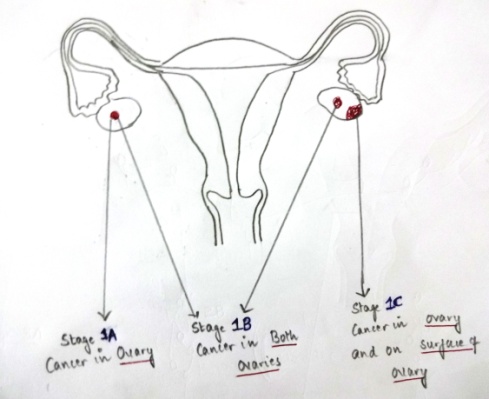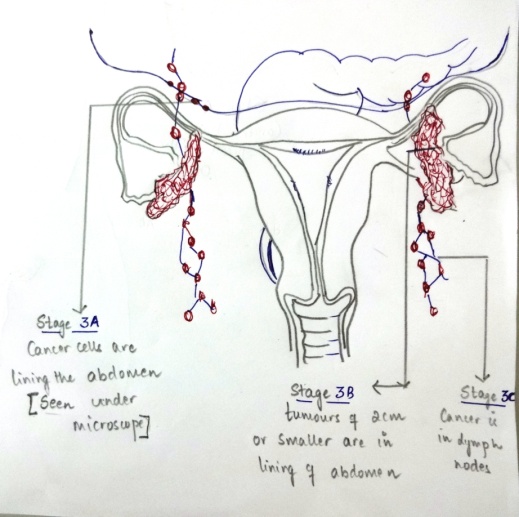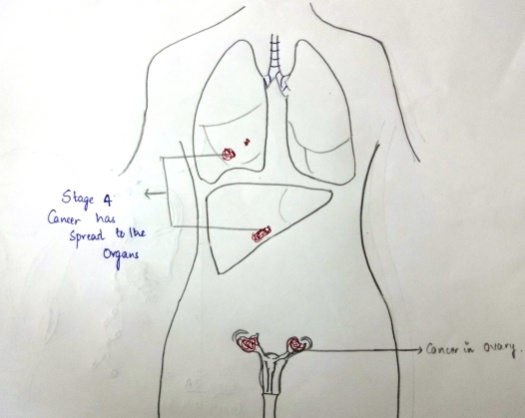Ovarian cancer is cancer that develops in one or both the ovaries. It can then spread to other parts of the body.
The annual incidence of ovarian cancer globally is 204,000. It has a high fatality rate as more than 70% are diagnosed at an advanced stage.

Ovarian cancer is classified according to the histology of the tumour, obtained in a pathology report. Histology staging and grading dictates the aspects of clinical treatment, management and prognosis for each patient:
- Surface epithelial-stromal tumour, also known as ovarian epithelial carcinoma, is the most common type of ovarian cancer that arises from the cells covering the surface of the ovary.
- Sex cord-stromal tumours are benign or malignant tumours in cells that surround the egg cell, including cells that produce ovarian hormones. It accounts for 8% of ovarian cancers.
- Germ cell tumour occurs in the egg producing cells. This is a rare type of cancer, accounting for approximately 30% of ovarian tumours but only 5% of ovarian cancers.
Staging of Ovarian cancer
Stage I – limited to one or both ovaries

- IA – involves one ovary; capsule intact; no tumour on ovarian surface; no malignant cells in ascites (fluid in the abdomen) or peritoneal washings (this is a procedure used to look for malignant cells, ie cancer, in the peritoneum)
- IB – involves both ovaries; capsule intact; no tumour on ovarian surface; negative washings
- IC – tumour limited to ovaries with any of the following: capsule ruptured, tumour on ovarian surface, positive washings
Stage II – pelvic extension (local tumour extension into the soft tissues and organs in the pelvis) and implants (direct extension of the tumour)

- IIA – extension onto uterus or fallopian tube; negative washings
- IIB – extension or implants onto other pelvic structures; negative washings
- IIC – pelvic extension or implants with positive peritoneal washings
Stage III – peritoneal implants outside of the pelvis; or limited to the pelvis with extension to the small bowel or omentum

- IIIA – microscopic peritoneal metastases beyond pelvis
- IIIB – macroscopic peritoneal metastases beyond pelvis less than 2 cm in size
- IIIC – peritoneal metastases beyond pelvis > 2 cm or lymph node metastases
Stage IV – distant metastases to the liver or outside the peritoneal cavity

Complications of Stage IV Ovarian Cancer
- Spread of the cancer to other organs
- Progressive function loss of various organs
- Ascites (fluid in the abdomen)
- Intestinal obstructions
- The cancer cells can implant on other abdominal (peritoneal) structures, including the uterus, urinary bladder, bowel, lining of the bowel wall (omentum) and, less frequently, to the lungs.
Picture courtesy Dr. Sahithi
Community
Condition












